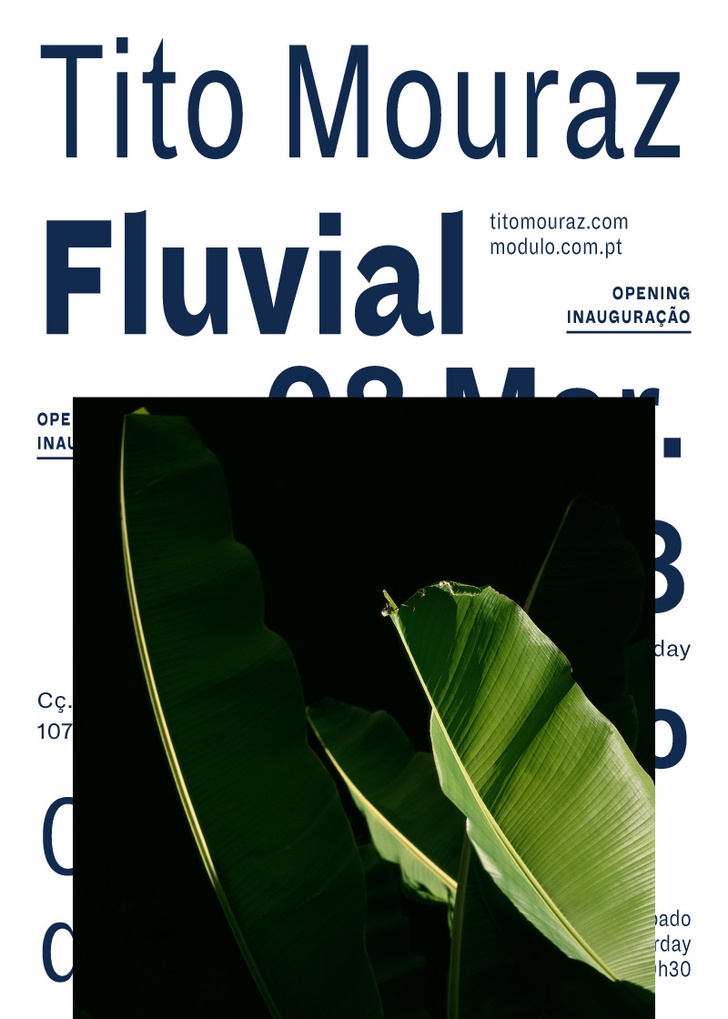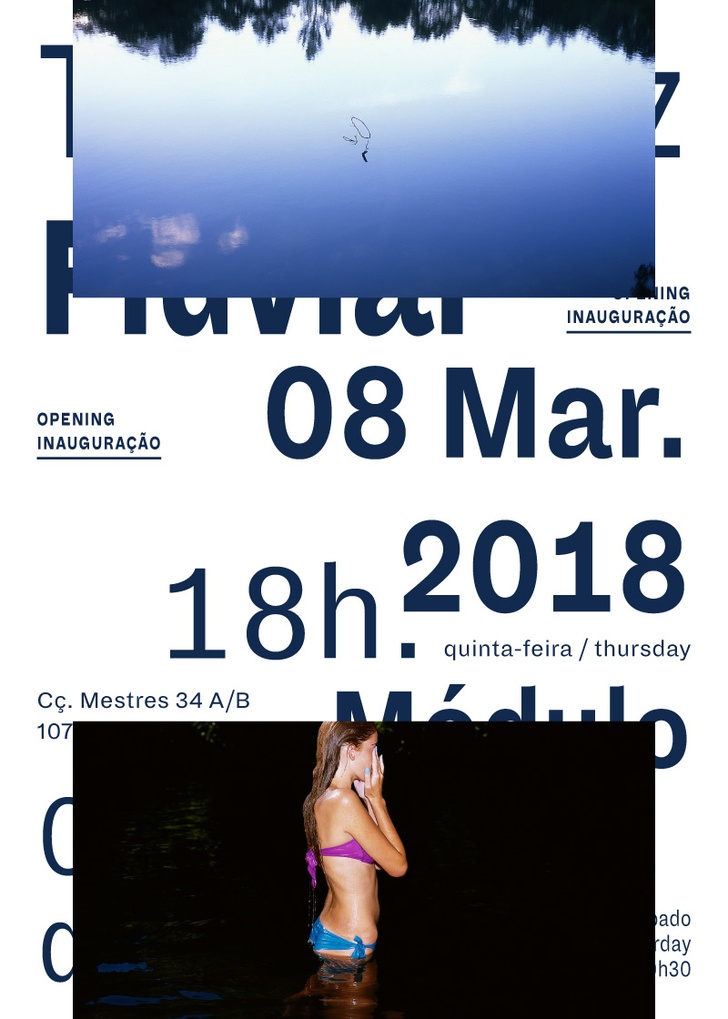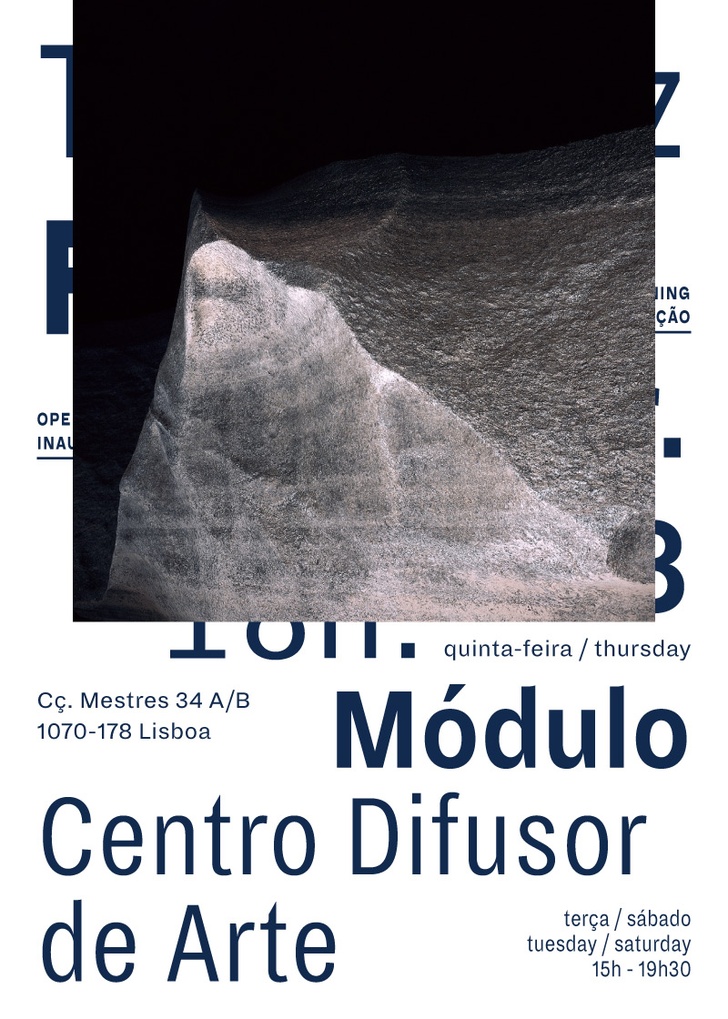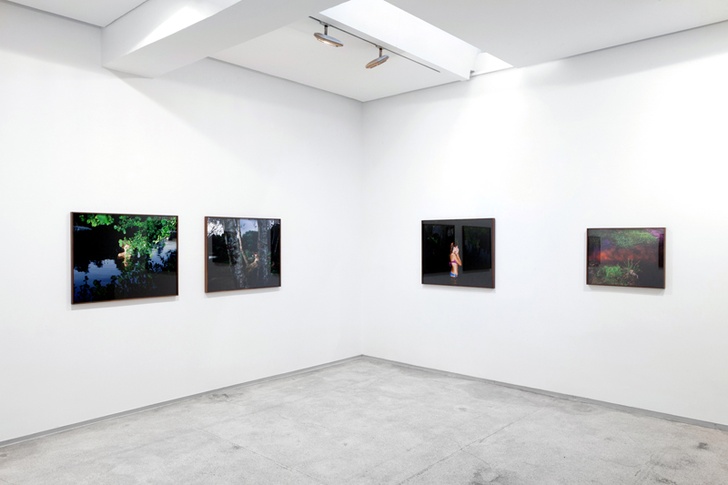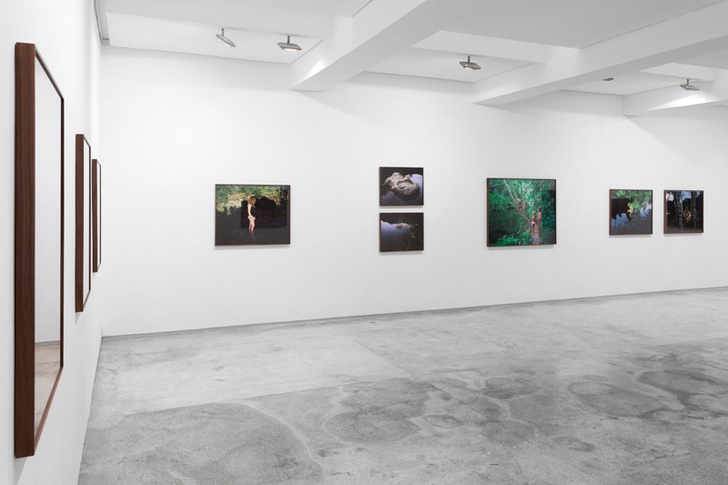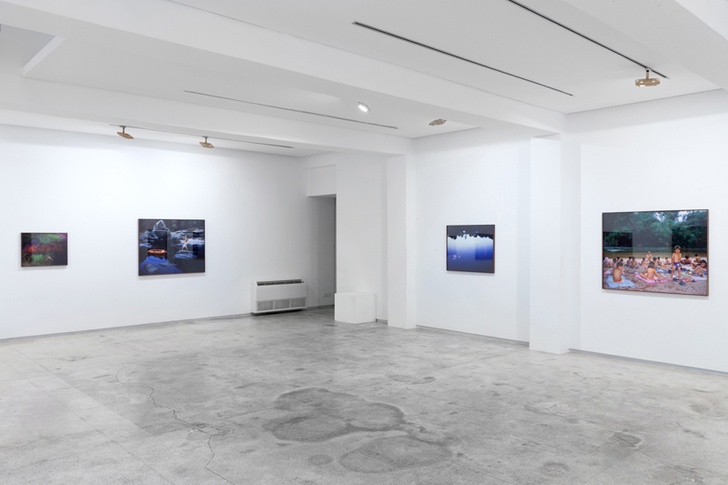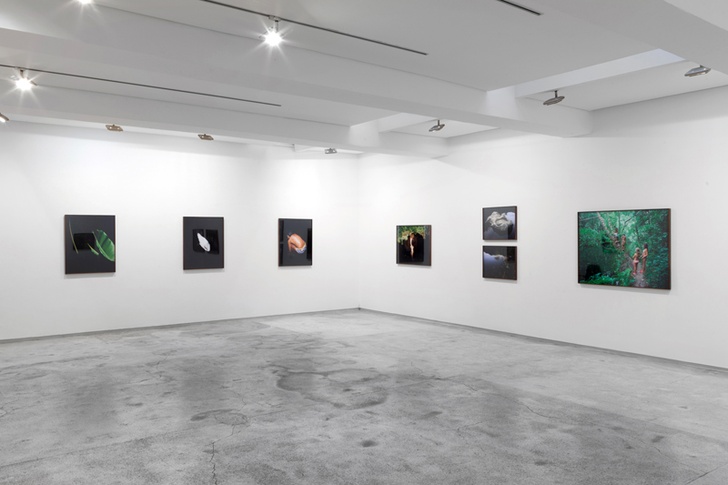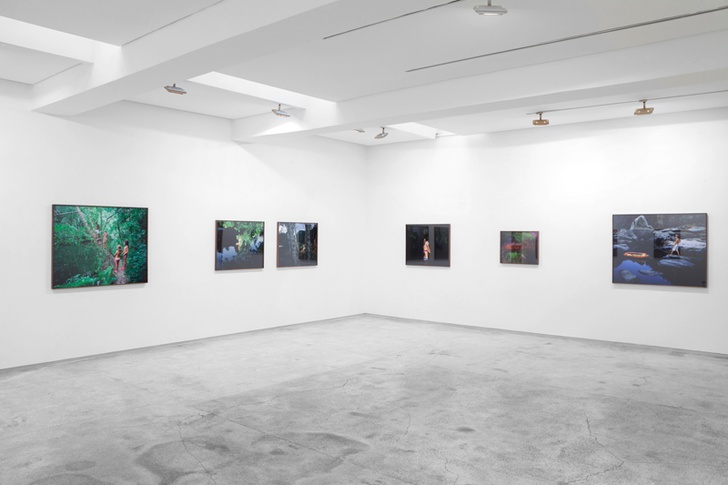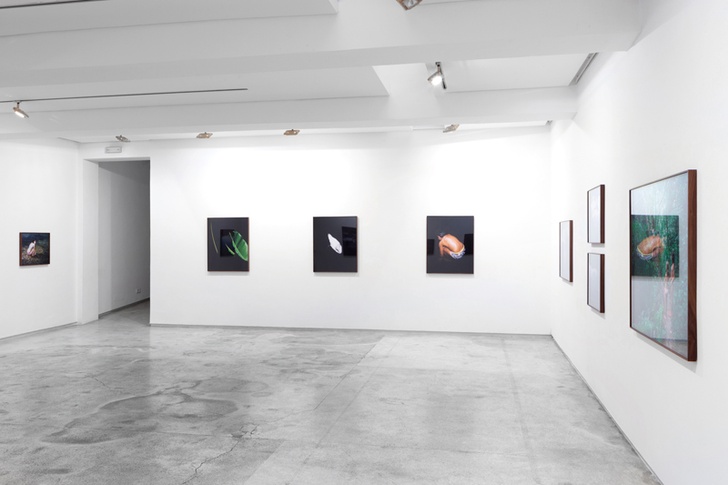< News & PressFluvial
Fluvial
Opening
Módulo - Centro Difusor de Arte
08 MAR 18pm
Cç. Mestres 34 A, 1070-178 Lisbon
Tuesday to Saturday – 15pm to 19.30pm
TITO MOURAZ returns to exhibit in Módulo Gallery (Lisbon) a new photographic series entitled Fluvial. After the much talked about project The House of the Seven Women in black and white (of which some images appear at the present in the exhibition In Black and White at the SNBA integrated in the exhibition of the PLMJ collection) the photographer returns to the colour with this new series that began in 2011 and again is centralized in areas near the family property in the district of Viseu. Moments of leisure in summertime to fragments of landscape enriched by a great plasticity of the colour.
To accompany with the exhibition two texts were written about the series exposed, one by Nuno Matos Duarte and another by Humberto Brito, included below:
The look-in-presence as presence: on the singular, on its mystery
The singular flourishes, luminescent but vulnerable, in the female figure that emerges from an absorptive aqueous environment, lugubrious. From the riverbank the observer looks and photographs a woman’s face framed by the oval outline of a shadow, but is halfway hidden by tree branches. Submerged almost up to her shoulders, she returns his gaze with a loving look. This look has its double in the water’s reflection and, when appearing in it, becomes viscous and fearful: the beautiful woman sees the observer looking at her; and from her point of view, he is also partly hidden by the vegetation. The veil comes between them. The perspective of this intricate game of seduction, which has seized these two observed observers, gives way to the anxiety of this blend of fear and falling in love that is founded on the awareness that the look will become four-fold: the observer who photographs also has his reflection, his double – that of the spectator who will see the scene already consummated through the image. Fascinated, the observer who photographs both discovers and builds, completely immersed in this tortuous interrogation on the nature of what is seen, overburdened by the miracle of an image that speaks as a mirror-of-itself. In a rushed move, these considerations seem to feed themselves exclusively on the evocation of the condition of the photographic; but in the procession of subsequent images, this gesture effortlessly thickens to weigh on the terrain that exceeds it, following the broader and more fertile path that transcends the specificity of the discipline. In other words this is to surpass by indicating the way of a life lived in art, an art that becomes, which grows into renewed presence.
The first image in the Fluvial series is given to us as a genuine prelude. However, it does not limit itself to that role – that is, the magisterial announcement of the gifts that determine the singularity of the images. It also summarizes what has come to be Tito Mouraz’s pursuit and, by being so iconic, is most likely the sign of a new stage in his work. In earlier series, Tito Mouraz’s attentiveness to the human and the animal revealed concerns about identity in light of the cosmic mystery – notice how in Casa das Sete Senhoras (TheHouse of the Seven Women), the people, the animals, are the (and in the) territory, both on the physical plane and the ineffable plane. But in Fluvial, the geographical location and an appeal to anthropology lose their subject matter and aesthetic relevance in the interests of the magnitude of a relation: the relation between human and animal and the idea of a specific natural element – the watercourse. The inclination toward a broad and significant gesture, something we could already sense in earlier series by Mouraz, fully achieves its maturity in this series.
These images find their voice in symbolic osteosynthesis, which charges them with the power to drive the imagination to uncertain places: the watercourse is everywhere. One could say – especially considering the obvious similarity between this subject matter and other concrete examples in the history of art – that art is the place where this water flows to in order to swell the river that, since Heraclitus, constitutes the metaphor of the irreversibility of time and causes the metamorphosis of creatures and things. It is in the direct way that the one who turns or bends their body to look that many of these images show not only this metamorphosis, but also the fusion of creatures with each other, and between creatures and the elements, by dissolution. Metamorphosis and dissolution add up to the capacity for reaction. And, however, as assets to adaptability, reveal the disenchantment the human being feels, as a functional and expectable creature, to fulfill itself while contending with the physical and social environment. There is a disturbing beauty in the vision of the dynamic between these bodies; it presents itself as a formal reduction (molded in this way, the bodies are also the rock) in this antagonism between tension and freedom, when only freedom should reign in this habitat of leisure, in this pleasing possibility to forget what constrains. No less disturbing is how, in a few images, this world appears to be strangely static when everything would otherwise seemingly impel us to the dynamic demanded by the watercourse. And, nevertheless, this immobility that provides continuity of something good is also a threat, and always shows up populated by the vestiges of an idea of perpetual motion: in the adventure, in the climb, in the dive, in the jump, in the fertility, in the elevation, in the communion, in the tenderness, in the iridescence of the fluids.
Lisbon, February 2018
Nuno Matos Duarte
“Fluvial” by Humberto Brito:
Two relatively harmless epidemics affect nature photographers and topographic photographers. One is, in the words of Lewis Baltz, ‘calendar aesthetics’; the other is irony. Notwithstanding the fact that he is interested in nature, and that he has devoted himself to a particular territory (northern and central Portuguese riverside beaches and villages), Tito Mouraz appears to be immune to both.
Photographed between 2011 and 2017, these fluvial scenes are rather expressive of a long, patient, reflection on how to be decent if also sophisticated toward a visually banalized geography. It also helps to remind that this is his personal geography, which is the source of further difficulties, some other than photographic (how to deal with one’s origins without indulgence but also without excessive harshness? how to reinvent a landscape as worn by habit?). The solution which Tito Mouraz seems to have found is the creation of a fictional atmosphere, an ode to leisure, based on theatrical gestures and a defamiliarizing gaze, through which he is still able to retain, almost paradoxically, a forthright sense of belonging and empathy.
Furthermore, this Fluvial series makes an analogy between erosion and vision, based on visual analogies between human bodies and other types of bodies, organic and inorganic. Just as the currents bend tree trunks and shape mineral blocks, which these images depict almost as land art sculptures, Tito Mouraz’s long term relationship with this territory has a depurating, revelatory, function, which makes him perceive human figures first and foremost as being analogous to such natural forms.
This gesture has a double effect. On the one hand, it signals elegantly the telluric (or rather, the fluvial) ties between certain bodies and certain places. Mutatis mutandis, it challenges us, rather provocatively, on the other hand, to entertain the nearly inconceivable stance of regarding human bodies as works of land art, as mere natural forms. Fortuitous extras within a protracted study of form, light and color, in the intimate geography which defines the authors work throughout the last decade or so, the role these people are given is not much different from that of models in painting, except that they are free to move around. The problems that this may cause to the photographer are here solved by means of certain explicit procedures, by which technical skillfulness and decency towards the subject are proven inseparable.
Among other procedures, I would like to retain three. First, the use of water not just as an element of suspension (which returns us, as observers, to irreducibility of human form), but also as an optical tool itself, the refracted image of whose submerged bodies is as nice metaphor for the dilution of the form of human individuals while on vacation. Then, in some of the portraits, there is a masterful combination of the flash with a fast lens aperture, from which there results, not exactly photographs of the landscape, but rather photographs of images of the landscape, as if blurry scenarios in front of which a model poses, through which the photographer seizes nature as his own, ample, private studio. Lastly, there is also the way how, by means of a robust use of the flash, the bodies emerge from chiaroscuro schemes whose precedents reside not so much in the photographic history as in the history of painting, reminiscent as they are of works by masters as Manet and Courbet. Realist if dreamlike, conveying a pagan sense of nature and the atmospheric ambiance of an infinite Sunday, Fluvial reminds one of a summer’s dream.
Humberto Brito

